Sergei Rachmaninov in 1921
Kubey-Rembrandt Studio, Library of Congress, Prints and Photographs division
Sergei Rachmaninov made his first appearances with the Chicago Symphony Orchestra on December 3 and 4, 1909, conducting his Isle of the Dead and performing as soloist in his Second Piano Concerto with Frederick Stock conducting. For more than 30 years, he regularly appeared in Chicago, both as recitalist and with the Orchestra, performing as soloist in his four concertos and the Rhapsody on a Theme of Paganini and conducting his Third Symphony and choral symphony The Bells. ‘
He first performed his Third Piano Concerto, again with Stock on the podium, on January 23 and 24, 1920. Despite a nasty Chicago storm, Orchestra Hall was packed for the Friday matinee. “The concert of yesterday afternoon was an event,” wrote Karleton Hackett in the Evening Post. “I do not care what the verdict of twenty years from now may be regarding this concerto, for I have just listened to a performance of it that stirred me deeply. . . . It was a work of a man who understands the capacity of the instrument and can write for it in the fresh, vigorous idiom of our day such music as brings out its peculiar power and charm. What is quite as much to the point, he himself can play the instrument with a mastery that makes every phrase a delight. Rachmaninov has supreme virtuosity. There is nothing he cannot do at the keyboard, from the most exquisite delicacy of ornamentation to the downright stroke of elemental power. . . . The music was so vigorous, expressing so spontaneously the emotion of our own time that it seemed as though it were being struck out in the white heat of the creative impulse of the moment.”
In January 1932, the composer was again in Chicago for three concerts with Stock and the Orchestra. After a performance of the second concerto on January 12, Herman Devries in the American reported, “It was not Chicago . . . it was not Orchestra Hall . . . it was not Rachmaninov . . . to me it seemed Olympus, and we were all gods. Thus does music glorify when it is itself glorious. It is not the first time that I have waxed passionately enthusiastic over the genius of Rachmaninov. After hearing Horowitz [in recital] on Sunday [January 10], we thought that the season’s thrills were nearly complete.”
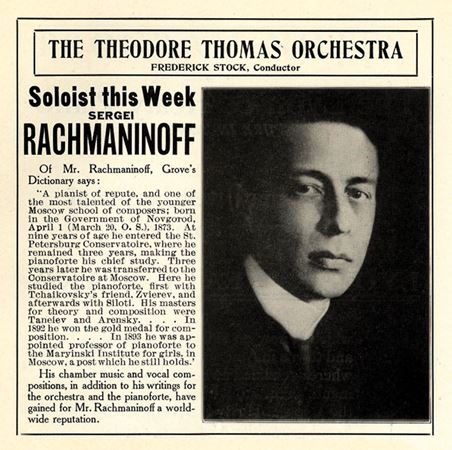
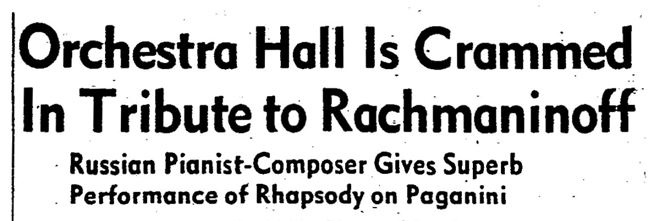
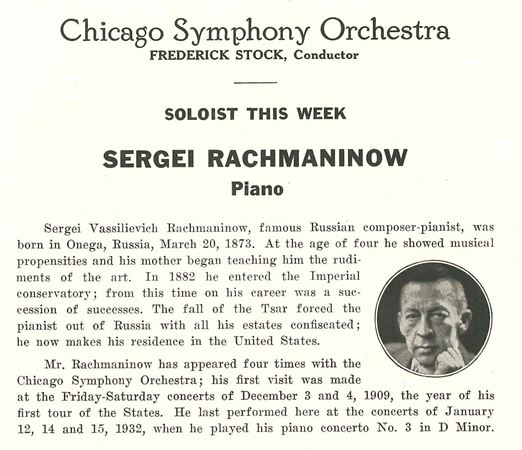
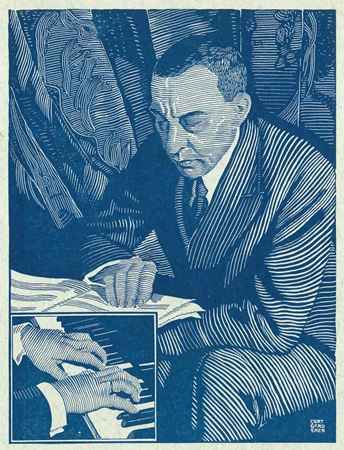
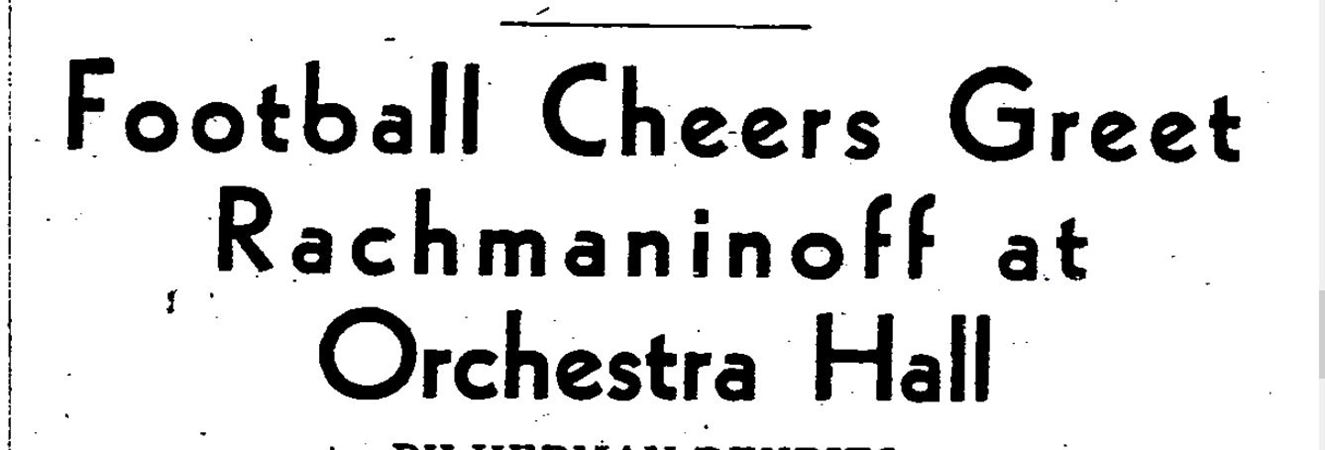
Later that week, on January 14 and 15, Rachmaninov was soloist in his third concerto. “The most exciting event in the history of Orchestra Hall occurred last night,” wrote Glenn Dillard Gunn in the Herald and Examiner. “With one impulse, the audience rose and shouted its approval. Many eyes were wet and many throats were hoarse before the demonstration ended. For once on their feet, the listeners remained to cheering after the Orchestra had trumpeted and thundered its fanfare and long after the composer-pianist had brought Dr. Stock to the footlights to share his honors. Never have I witnessed such a tribute . . . and never, it is my sincere conviction, has such response been so richly deserved.”
Rachmaninov’s final appearances with the Orchestra were on February 11 and 12, 1943, in Beethoven’s First Piano Concerto and his Rhapsody on a Theme of Paganini, under the baton of associate conductor Hans Lange. “Sergei Rachmaninov evoked a series of ovations when he appeared with the Chicago Symphony Orchestra at Orchestra Hall last night,” wrote Claudia Cassidy in the Chicago Tribune. “His entrance won standing tribute from orchestra and capacity audience, his Beethoven stirred a storm of grateful applause, and his own Rhapsody on a Theme of Paganini ended the concert in a kind of avalanche of cumulative excitement.”
The following week, Rachmaninov traveled to Louisville and Knoxville for solo recitals on February 15 and 17, in what would be his final public performances. He died in Beverly Hills, California, on March 28, 1943.



